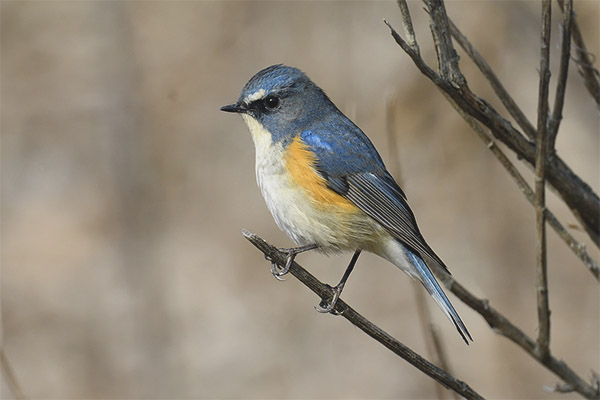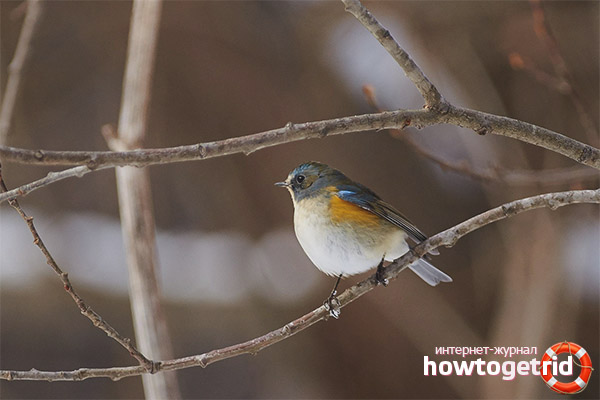The content of the article
Sinehvostka is a small bird of the family of songbirds, not larger than the common sparrow in its size. Body weight reaches - 18-20 g, with a length of 150 mm. The bill at the blue-tail is also rather small and slightly upturned. According to its constitution, as well as its characteristic behavior, this songbird is more similar to this kind of birds, like a charger. On the ground it moves by jumps, mainly kept in the thickets of trees and dense bushes.
To the place of wintering, as a rule, this species of birds flies away with the arrival of the first cold weather (late September, October). The main food of the species: small invertebrates, insects, seeds and berries.
Description of the species
This species of birds is distinguished by its modest size and rather bright plumage (the predominance of blue). Sexual dimorphism in representatives of this species of birds is pronounced - the feather cover of the male differs significantly from the color of the plumage of the female.
The characteristic gray-blue feather color is present not only on the tail, but also on the head and back of the bird. Above the eyes are bright blue arcs that stretch to the back of the head.
The bird's chest is light, the lower part of the body is blue and white. The main difference of this species of birds is the sides of a yellowish color. The color of the feather cover of the females of the blue-tails is dimmer, the top is more brown, the rings around the bird's eyes are white.
Young individuals have a feather outfit more similar to that worn by females, the bright color of males appears only after their puberty.
Power Features
Sinehvostka able to catch many flying insects while in the air, which is caused by its agility and agility. With the approach of cold weather, when insects become smaller,The bluetails are fed by various berries and seeds of plants.
Bird voice
The bird sings not loud, the songs are unhurried, consist of repeatedly repeated whistling trills. The most active blue-tails sing at dusk, as well as on warm, bright nights. As a rule, the males during their chants sit in the canopy of trees, hiding from prying eyes. In the event that the bird is anxious, the whistle becomes more rhythmic and intermittent, resembling the sounds of a redstart or varakushka.
Spread and lifestyle
The most common population of this species is in the northern part of Europe, the main wintering place is southeast Asia.
The bird arrives at the nesting site in late spring, the most preferred area for this species is taiga, mixed forests, wetlands, plains.
Sinehvostka, especially females, are good masters of disguise, this is because the plumage of these birds merges with the surrounding terrain.
Breeding features
Blue-tails prefer a solitary lifestyle, if couples are created, then only for the period of mating and for breeding future offspring.For one season, female birds make two eggs.
The young sinehvostok grow very quickly, and already after a short period of time they become on the wing. This is due to the fact that nature itself provides that in one season a pair of birds must produce two broods of chicks.
Interesting fact
This kind of migratory songbirds, like blue-tailed birds, striking with their bright plumage,is one of the few species of birds, which sing their quiet but melodious trills both day and night.












To send